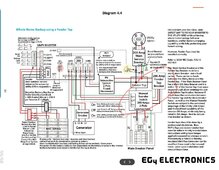ssjrapter
New Member
I'm seeing up my solar system and know my city participates in net meeting, but I can't seem to find what the local city codes require of anything regarding how the things are required to be setup. Specifically in Oklahoma City if I actually need a manual transfer switch with my system or if I can just have it permanently attached to my inverter with grid backup, this bypassing the need for both a feeder tap and a tap breaker as well as a very bulky and expensive transfer switch. I understand the need for a fused disconnect and manual breaker just after the meter but I can't for the life of me figure out why I would need the inverter bypass to become grid tied.



